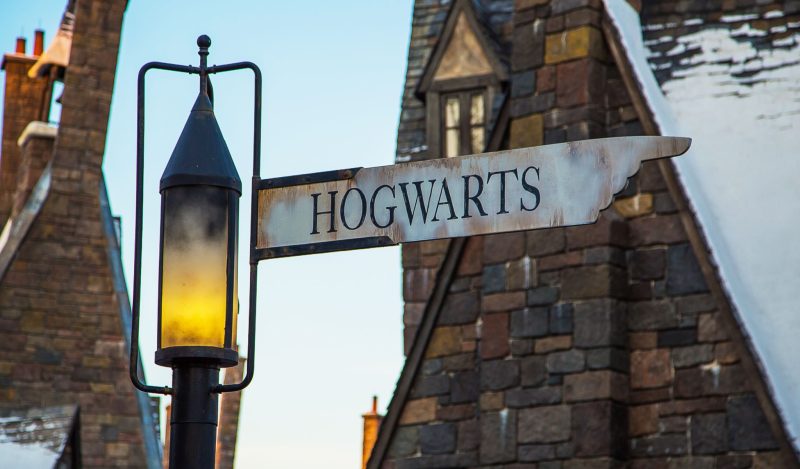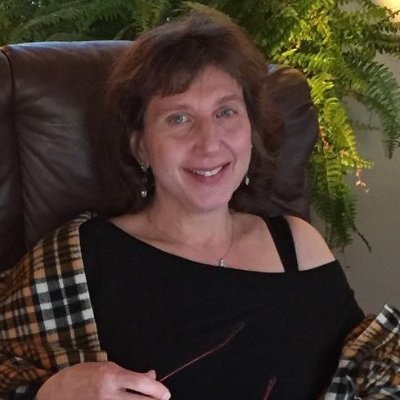On a warm spring day roughly ten years ago, back when we still did such things, I caught a city bus to my office in downtown Minneapolis. It was a pleasant early morning ride, windows open, the people unusually quiet. I looked around and realized nearly everyone on the bus was reading a book.
I probably thought some self-congratulatory thing about how I lived in a literary place, full of creative minds (I was high on Richard Florida back then). But then I noticed that the two women across the aisle were reading a Harry Potter book and Twilight, respectively. I turned, full circle, and counted. Prisoner of Azkaban, Hunger Games, Breaking Dawn…Of the two dozen readers, only one man was reading a book meant for adults—something about growing his business. Everyone else, people in their 30s, 40s and 50s, was reading Young Adult (YA).
This bothered me in a way I couldn’t quite articulate. It seemed like stealing, a kind of real-life vampirism. I felt like these books belonged to a younger generation— these were their coming-of-age stories and retreat from the adult world. Sure, I knew parents and teachers might read the books aloud and even enjoy them. So the line was thin.
But for middle-aged office workers to be hunched over these books about the dramas and loves of 17-year-olds? It had a hint of the predatory. I just didn’t like it. But there was almost no one I could tell.
The 40-year-old admin for our CEO had a cubicle decked out entirely in Twilight swag; she told me once she was “Team Jacob,” and I nodded knowingly though I had no idea what that meant. I’d declined to join a couple of book clubs when I found out their reading lists were made up mostly of kids’ books and Fifty Shades of Grey (I’ll get to that). Our friends had begun taking anniversary trips to places like Disney World and Harry Potter “Forbidden Forest” popups—without their children. The childless couples we knew were even more committed: they had all the movies plus Harry Potter costumes, wands and games.
My husband and I spent several years putting on pleasant faces when talk over cocktails drifted to “Which Hogwarts house would you belong to?” It all felt so juvenile and regressive. And I believe it was.
In 2020, when Covid threatened, many of those very same people shut down the world of children without hesitation. The wonder and hope they’d sucked from those books…they still wanted those things, but for themselves. Grownups had spent a decade expecting their lives to be just as magical and fairytale-ish and full of possibilities as those of a 12-year-old. Those same people wanted to save themselves—even at the expense of education, friendship, proms, laughter, sports, birthday parties, and playtime for kids.
Closing playgrounds while keeping country clubs and golf courses open fit the logic of a world in which adults imagined themselves apprentice wizards, yearned for mystical lovers, and kept searching for their own happy ending. The society of children—unpredictable, germy creatures—should stop interacting until their young-at-heart elders felt sufficiently safe and fulfilled.
Post-Covid, the crusades of our polarized country continue to play out in the area of children’s literature. Why? Because adults have co-opted the art that used to be a sanctuary for the readers and seekers and thinkers of a new generation. By using school libraries as a battering ram for their political positions, grown people continue stealing from the experiences of children. There is no privacy, or autonomy, for teens in America. Their stories are nothing but cannon fodder for the culture wars.
In 2005, Stephanie Meyer—a 32-year-old Mormon with a brand-new baby—wrote a book about a teenager named Bella who moves to misty Forks, Washington, and falls in love with a 104-year-old vampire in a lithe, young man’s body. Meyer claims to have based her book on “love, not lust”—a love so fierce that Edward, the sexy vampire, refrains with mighty willpower from exsanguinating Bella. Threaded through the story are Mormon themes about immortality and eternal life. Twilight was marketed straight on as a young adult fantasy romance and received middling reviews.
The New York Times labeled Twilight a “12 & up” YA book and recommended the novel with several caveats—noting Meyer’s “earnest, amateurish writing” and her tendency to tell rather than show.
Nonetheless, Twilight became a bestseller within a month of its publication in 2005, and climbed to #1 on the NYT fiction list later that year and topped the USA Today bestseller list, along with its three sequels, from 2008 (the year the first movie came out) until 2010. Twilight was named one of Publishers Weekly‘s Best Children’s Books of 2005. But it wasn’t children fueling those sales.
The trend of adults reading children’s books had started, and been commented upon, a few years earlier, when adults flocked to Harry Potter. People with mortgages and jobs who hadn’t picked up a novel in years ripped through J.K. Rowling’s series. Studies were funded on this phenomenon. Over time, those who objected were shouted down by people who insisted the books “taught ethics” and any statistical improvement in literacy was a net good.
Twilight debuted in the midst of this period, at a time when adult Potter readers—especially women—were hungry for more easy-to-digest children’s lit. These readers were clamoring for more vampire romance; Meyer literally could not write fast enough to meet the demand. Forums sprang up online where adults not only discussed the Twilight books but wrote their own Twilight-inspired stories and circulated them to other participants as “fan fiction.”
Prior to Twilight, fan fiction holed up in a musty corner of the Internet where sci-fi geeks imagined new storylines for Star Trek. Then a Twilight superfan who called herself E.L. James started writing erotica based on the relationship between 17-year-old Bella and her dominating 104-year-old love interest. In the real world, minus vampires, this became a story about straight-up stalking, abuse and bondage called Fifty Shades of Grey that James self-published in 2011 and sold to Vintage Books in 2012.
Once again, women (and some men) throughout the world bought her work in droves, making James an overnight multi-millionaire. Reviews of the book include consummate free speecher Salman Rushdie’s saying “I’ve never read anything so badly written that got published.” Other critics called it “dull,” “sad,” and “puny of plot.” Nonetheless, nearly every woman I know—old, young, urban, rural, Democrat and Republican—has read Fifty Shades. Many have discussed it over wine at book club. Several have given it to their daughters. Why? Because it’s the next logical step in this devastating, dumbifying trend.
The reason adults who hadn’t read a book since college embraced Harry Potter was that it was uncomplicated: linear, familiar in its fairytale structure, binary (good vs evil), and guaranteed a fairly easy satisfying end. This is not to diminish J.K. Rowling, who wrote a magnificent YA series (and has since written complex adult books); it is to say that just as T-ball isn’t appropriate for professional athletes, Harry Potter wasn’t appropriate for corporate lawyers and nurses. They knew this, but instead of switching to Elizabeth Strout or Milan Kundera or Cormac McCarthy—with all of their messy, open-ended, subtle backstory qualities—grown Potter readers just kept reaching for simple tales with more adult themes.
Twilight, with its dark setting and carnal atmosphere, got them part of the way there. But it was still a teen book. What Fifty Shades offered was all the trappings and details, the beautiful heroine and large castle and 500-word vocabulary writing, with nonstop graphic sex. This was the culmination of Potter mania among the silver-haired set. Simplistic, formulaic writing that was raw and forbidden—unsuitable for children. But at some point, the categories got confused. Suddenly there was no more YA literature, only fantasies that adults had seized and obsessed over. Professional groups of children’s authors were beset by political battles and all-out mean girl warfare.
Then the issue of porn in YA arose, right around the time Covid mania began to fade. Suddenly, parents who’d been dipping into their children’s bookshelves for years, buying fan fiction that celebrated forced sodomy, decided they were uncomfortable. After 20 years of behaving in exact opposition to this premise, they were demanding that children’s literature be appropriate for kids.
This week, the Carver County library board, about 30 miles from my suburban St. Paul home, met to consider a request that they remove Gender Queer, a graphic memoir about the sexual awakening of a non-binary person, from their shelves.
This is a general-use public library system that circulates—I checked—135 copies of Fifty Shades of Grey. They had purchased a single copy of Gender Queer and shelved it in their adult nonfiction section. Someone complained that this was dangerous, because a child might find it and read it. The board wisely and unanimously voted against removing the book.
We’ve evolved from the days when adults were appropriating stories and experiences meant for children. Today, those same adults are appropriating the entire YA space to act out their political wars. Children’s books have become the flashpoint, the symbol, for extremists on all sides.
It is true that Gender Queer pushes the boundaries of what is appropriate for teenagers. It features an illustration of oral sex using a dildo that beyond being graphic, may not (if my knowledge of human sexual response is accurate) demonstrate a sensate biological act. Introducing this book into public schools is dicey; it’s literature mixed with activism. There’s no question it serves an agenda: to normalize queer lifestyles and experimentation. It’s also a well-told story, beautifully illustrated, and there is nothing dangerous or degrading in the book.
The response to this title has been immense and overblown—to the point where the battle in my state was not over whether to remove it from a school library but whether to remove it from a public library, because a grade schooler might wander into the adult section, pluck it off the shelf, and be scarred.
We have gone from adults reading children’s books to adults being denied books because children might read them. We have done away with the lines of age-appropriate reading material and now we are living the outcome: grown people with wizard wands and poor critical thinking skills who use children to fight their battles, whether against a virus or a political opponent. The kids are irrelevant. The generations that turned children’s stories into literal porn have some regrets.
Personally, I think it is time to put away childish things and leave actual children their fantasy worlds, heroes, monsters, and coming-of-age tales. If adults would let go of their own simplistic worldview and keep petty politics out of the YA arena, publishers would gear books to the children who read them—rather than puerile grown people who order Fifty Shades-branded handcuffs and pose for anniversary selfies in front of the fireworks at Disney World.
Join the conversation:

Published under a Creative Commons Attribution 4.0 International License
For reprints, please set the canonical link back to the original Brownstone Institute Article and Author.









